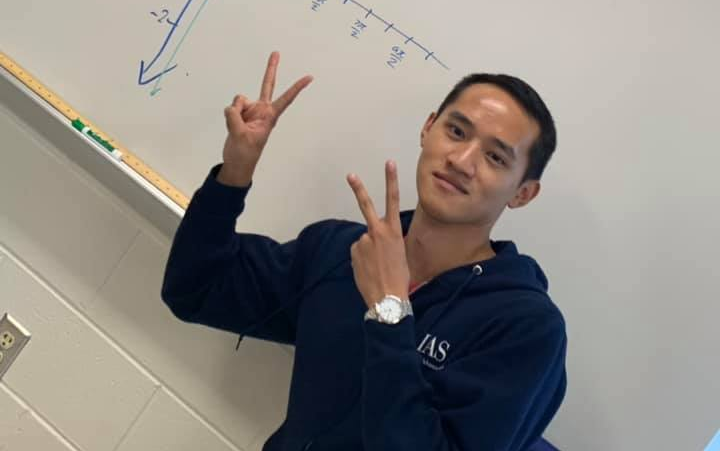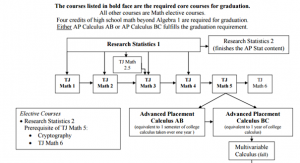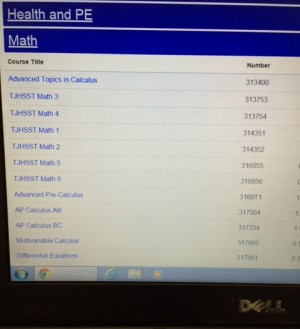Explanations over expectations
Math teacher Kai Ng teaches students, not concepts
January 24, 2021
In a room shared by his cat and a fellow instructor, Kai Ng sits at home, explaining concepts to dark screens masking his students’ faces. His aggressive typing sprees and clever jokes crack up the students behind these empty screens.
Unfortunately, due to the virtual setting, Ng does not receive the validation of hearing their laughs. Nor does he get the gratification of seeing his students grin when he makes long-awaited changes to the curriculum. These changes are effective in lowering student workloads while encouraging a stronger understanding of the material.
Virtual learning has been a challenge. Students have to find new ways to learn while teachers have to adjust their approach to teaching.
“Some of the teachers that I didn’t like much [this year] were teachers that didn’t really bother to sit down with you and explain things. They tell you ‘here, go do this, here’s a slideshow somebody else threw together. Read over it, if you want, I don’t really care, [as long as you] bring me a nice result,” sophomore Mira Singh, taking Math 4 with Ng, said.
While some teachers have struggled to adapt, others have learned to excel in this strange, shifting environment. Kai Ng is one of these teachers.
“[Mr. Ng] understands what we’re receiving and what we’re not, which is really important, because when a kid has a question, even if he doesn’t understand what the kid is asking, he’s gonna get to the heart of it, and answer it to the best of his ability,” freshman Riva Jain, taking Research Statistics 1 (RS1) with Ng said. “That’s really helpful because often, it’s a question that a lot of us have.”
Ng has only taught for two years at Jefferson (this year being his second). However, he taught at schools in DC for six years prior. These middle and high schools were vastly different from Jefferson.
“My first day, a student threw a chair in my classroom,” Ng said.
Teaching at a school where many students pushed back against his authority gave Ng insight into effective teaching.
“I learned to recognize that, yes, kids need to be guided, but, at the same time, kids need space to make their own mistakes, and I recognize that I have to give them that kind of space,” Ng said.
His years teaching in DC also taught him to be vulnerable and open around his students.
“I think, for me, I recognize that I can’t teach like a robot. I need to just be myself,” Ng said.
Teachers set boundaries between their students and themselves, creating formal student-teacher relationships. This method may make some students feel less comfortable in reaching out to those teachers.
“It’s not about treating my students as my friends, it’s about being very clear that ‘hey, it is a classroom space, but you should not be afraid of who I am or ever feel uncomfortable. I have no idea how you will be able to listen to me talk about math for 20 minutes if you are,” Ng said.
Not only has Ng made the virtual classroom a comfortable place, but he has also adjusted his class structure to make online learning easier on his students.
“[At the beginning of this year], a lot of students thought the classwork was too much. [Mr. Ng] asked the students how they were doing regarding certain aspects of the curriculum, and took their input and applied it,” sophomore Richa Gupta, taking Math 4 with Ng, said. “He was able to make math more fun, rather than more stressful.”
Ng’s system is similar to the adaptive e-learning teaching method. This method, according to e-student.org, is a new and innovative type of e-learning, which makes it possible to adapt and redesign learning materials for each individual learner, adapting to students’ strengths and weaknesses.
“His teaching style in general is just really nice. He talks about what’s important in lessons and explains the underlying concepts,” Jain said. “I think that’s helpful for me because if he didn’t explain certain things at the start of class, I would be learning how to complete assignments while doing them, instead of applying my existing knowledge to the work provided.”
With the impending, concurrent hybrid learning, more and more teachers will have to begin modifying their curriculums.
“Students and teachers need to be flexible and understand that things are going to change,” Jain said. “Even though we’ve been in this situation for a while, we’re going to still have to work around things as we encounter new situations.”









